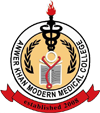Anwer Khan Modern Medical College
Library Management System

| Title: | Andrews' diseases of the skin: clinical dermatology |
| Author Name: | William D. James. |
| Author Sur Name: | JAMES, William D. |
| Other's Author Name: | Timothy G. Berger and Dirk M. Elston. |
| Author information: |
|
| Edition/Published: | 12th ed. _Philadelphia : Elsevier , 2016 |
| New to this edition: |
|
|
Physical Description: x, 965p., : color illustrations, tables, chart.; 27cm. |
| Notes | Includes Index. |
| Includes Index: | P. 925-965 |
| ISBN No's: | 978-0-323-31968-3 |
| Bar Code's: | |
| Shelf Location's: | 04 |
| Classification | |
| Subject: | Dermatology |
| Dewey Class No: | 616.5 |
| Letter Call No: | J23a |
| LC Classification: | RL71 .A5 2016 |
| Other's Book Information | |
| Book ID No: | 1822 |
| Total Books: | 1 |
| Date of collection's: | 01-Nov-2016 |
| Donation / Purchase: | Purchase |
| Language: | English |
| Status: | Available |
| Department: | Dermatology & Venereolgy (Skin & VD) |
| Synopsis: |
|
| Review: |
|
| Description: |
|
| Key Features: |
|
| Abstract: |
|
| Preface: |
|
| Content: |
1. Skin : basic structure and function-1 2. Cutaneous signs and diagnosis-11 3. Dermatoses resulting from physical factors-18 4. Pruritus and neurocutaneous dermatoses-45 5. Atopic dermatitis, eczema, and noninfectious immunodeficiency disorders-62 6. Contact dermatitis and drug eruptions-90 7. Erythema and urticaria-136 8. Connective tissue diseases-153 9. Mucinoses-179 10. Seborrheic dermatitis, psoriasis, recalcitrant palmoplantar eruptions, pustular dermatitis, and erythroderma-185 11. Pityriasis rosea, pityriasis rubra pilaris, and other papulosquamous and hyperkeratotic diseases-199 12. Lichen planus and related conditions-209 13. Acne-225 14. Bacterial infections-245 15. Diseases resulting from fungi and yeasts-285 16. Mycobacterial diseases-319 17. Hansen's disease-331 18. Syphilis, yaws, bejel, and pinta-343 19. Viral diseases-359 20. Parasitic infestations, stings, and bites-418 21. Chronic blistering dermatoses-451 22. Nutritional diseases-471 23. Diseases of subcutaneous fat-480 24. Endocrine diseases-491 25. Abnormalities of dermal fibrous and elastic tissue-500 26. Errors in metabolism-509 27. Genodermatoses and congenital anomalies-542 28. Dermal and subcutaneous tumors-579 29. Epidermal nevi, neoplasms, and cysts-625 30. Melanocytic nevi and neoplasms-680 31. Macrophage/monocyte disorders-699 32. Cutaneous lymphoid hyperplasia, cutaneous t-cell lymphoma, other malignant lymphomas, and allied diseases-726 33. Diseases of the skin appendages-747 34. Disorders of the mucous membranes-789 35. Cutaneous vascular diseases-807 36. Disturbances of pigmentation-856 37. Dermatologic surgery-874 38. Cutaneous laser surgery-901 39. Cosmetic dermatology-913 |
